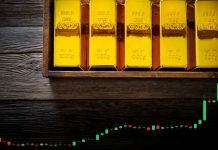Markets
EUR/USD yesterday pierced key resistance at 1.0341/50/68 (2017 low/May2022 low/August2022 high). The technical break fast-tracked the pair’s rally, in first instance towards 1.04. Lower-than-expected US producer price inflation served as second accelerator towards 1.0475. Next intermediate resistance at 1.0516 (50% retracement on this year’s EUR/USD decline) all of a sudden came within striking distance. To know that the pair set a multi-year low at 0.9536 at the very end of September. However, all of a sudden the intraday EUR/USD rally started losing steam. The Russian missile attack on Kiev served as a harsh reminder that there are two sides to the EUR/USD equation. It’s one thing for the dollar to correct lower as the Fed prepares to slow down its tightening efforts. It’s another thing for the single currency to take the baton from the weak dollar and extend the EUR/USD correction higher on euro strength. The Kiev bombings and the stray rocket on Polish territory (un- or friendly fire?) reminded investors that the Russian war in Ukraine isn’t over despite the recent ground recovered by Ukrainian forces. EUR/USD came off its high to drop almost two big figures intraday and close below 1.0350. The pair changes hands around 1.0380 as US President Biden said that the missile strike (on Polish territory) was unlikely to be fired from Russia. NATO is still investigating the issue though. Should Russia nevertheless be responsible, it would be the first attack on NATO soil since the start of the Russian invasion and mark a new escalation in the war.
Core bonds recovered more ground yesterday with US Treasuries outperforming German Bunds. US yields lost 5.1 bps (2-yr) to 9.4 bps (5-yr). Apart from the very front end of the curve, US yields all trade clearly below first support levels (necklines of double top formations), calling for more short term correction/consolidation. The German yield curve bull flattened with yields giving away 1.1 bp (2-yr) to 5.2 bps (30-yr). German yields for now hold above similar technical necklines. Stock markets gained up 0.7% in Europe and 1.45% in the US.
Today’s eco calendar is heavy and interesting in the US with retail sales and industrial production data. Especially retail sales are worth looking at. Signs that US consumption is relatively holding up even as inflation bites a hole in people’s pockets could slow the current correction on this year’s big market trends. Speeches by ECB/Fed governors are wildcards as is the developing NATO investigation. UK inflation this morning accelerated more than expected to 2% M/M with the Y/Y reading spiking from 10.1% to 11.1%. Underlying core CPI stabilized at 6.5% Y/Y. Sterling tried to gain on the number, but failure to do so prompted a leap higher towards 0.8760.
News Headlines
In an annual review, the IMF indicated that Australian growth is expected to slow after the country showed one of the strongest recoveries from the pandemic in the developed world. The IMF expects 3.7% growth this year, but this expected to slow to 1.7% in the fiscal year 2023/2024. Amongst other factors, the decline in housing prices is seen as an important factor behind the slowdown in growth. Despite the expected economic slowdown, the agency still advises the country to continue tightening both monetary and fiscal policy to further rebalance domestic demand and reduce inflationary pressures in the economy. In this respect, the IMF sees need for additional tightening from the Reserve Bank of Australia even as it already raised the policy rate by 275 bps. Aside from the IMF report, Australian wage statistics for Q3 published this morning showed a further acceleration to 1.0% Q/Q and 3.1% Y/Y (from 2.6%). However, the gain probably won’t change the broader assessment of the RBA on wage growth as a driver of domestic inflation. The Aussie dollar, which had a good run since mid-October gained modestly with AUD/USD trading at 0.6765.
Member of the MPC of the central bank of Poland, Henryk Wnorowski, in a television interview kept the door open for the Polish central bank (NBP) to resume raising interest rates after the hiking cycle was paused at 6.75% since the early October meeting. For example if the recent projections of the NBP were to materialize or if inflation expectations become de-anchored. In its inflation report published earlier this week, the NBP only sees inflation returning within the 2.5% -/+ 1% target band late in 2025, assuming an unchanged policy rate of 6.75%.













